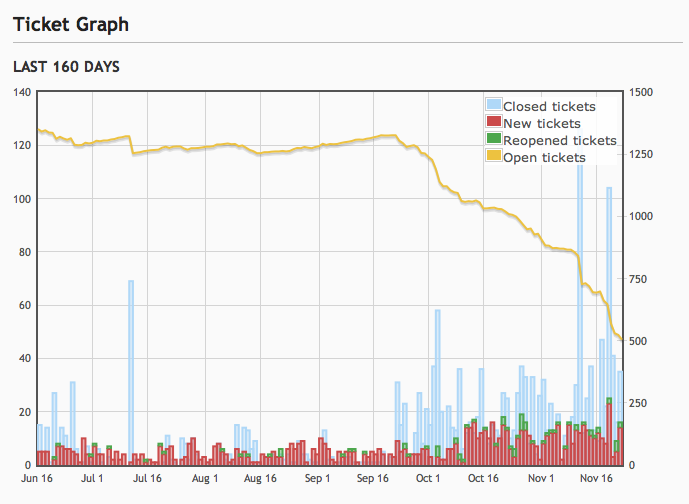
In today’s post we’ll be presenting updates on both jQuery Core and UI as well as highlighting any upcoming training events being held and articles or videos which we think might be useful to read. We would appreciate your comments and feedback on them!
Contents
- –jQuery 1.5 Was Released
- –Unleashing the Grid – A New jQuery UI Grid
- –jQuery Conference Videos Are Now Available Online
- –Upcoming jQuery Training Events
- –A New Episode Of YayQuery
This week, the core team released jQuery 1.5 to celebrate the fifth birthday of the library. This included many performance improvements and bug fixes as well as a major re-write of the Ajax module which now comes with deferred callback management. Core also introduced a new feature called jQuery.sub which allows for new copies of jQuery to be created where properties and methods can be safely modified without affecting the global jQuery object.
If you haven’t had a chance to read or play around with these new features as yet, community member Eric Hynds wrote an in-depth tutorial on using Deferreds which you may be interested in. I also recorded a quick screencast explaining how to use jQuery.sub.
jQuery 1.5 has already begun to be used in the wild and you may also be interested in taking a look at jQuery templating author Boris Moore’s new script loader which also makes use of deferreds.
As always, we appreciate any and all community feedback on the 1.5 release and if you discover bugs or issues which you would like to report, you can do so by following our bug submission guidelines. We’ve already made a number of fixes to 1.5 (which can be tested in jQuery-Git) and we also welcome any feedback on that version as well.
Remember that up-to-date information on all our future releases (including jQuery 1.5.1) can be found on our roadmap.
Unleashing the Grid – A New jQuery UI Grid
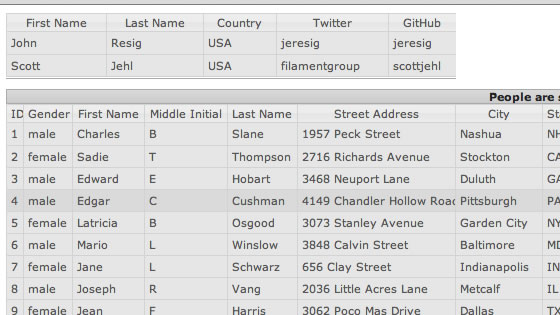
The jQuery UI Team have announced an exciting new project called the jQuery UI Grid, where they’ll be building a feature rich, fast grid widget for enhancing table data with linking, sorting, paging and inline editing amongst other features.
There have been quite a few attempts outside of the project to create such widgets before, however they’ve often suffered from poor support, documentation or a lack of extensibility – the new UI grid project aims to solve these issues by providing a project-supported component that will be both modular and continually updated.
Speaking to Richard D. Worth, here’s a progress update on where the team are with the Grid at the moment:
We are nearing completion of development on Stage 1 of the project, which encompasses the creation of a generic data model, data type parsing, and markup. This stage will culminate in a “zero feature grid,” an enhanced HTML table that supports the jQuery UI CSS Framework and serves as a base for other grid features.
Read Richard’s full blog post on the new Grid.
jQuery Conference Videos Are Now Available Online
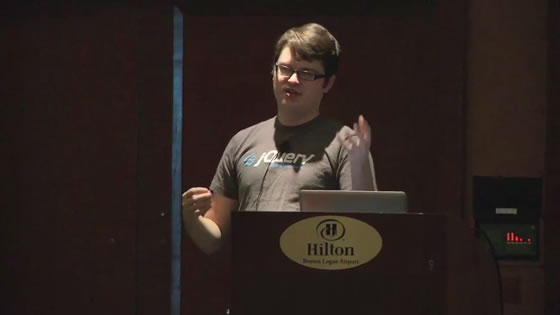
If you weren’t able to attend the jQuery Conference in Boston last year (with speakers such as John Resig and Karl Swedberg in attendance) we’ve got some great news – almost all of the talks are now available to watch online (either on your desktop or mobile device) via our conference site. You can also pick-up the slides mentioned in the videos by clicking on any individual speaker’s talk.
Upcoming jQuery Training Events
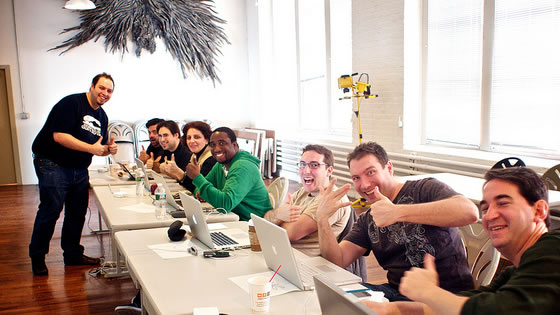
Group training can be an excellent way to improve your jQuery skills and Ben Alman over at Bocoup (a jQuery sponsor) would like to make a special announcement about upcoming events they’ll be holding in March and July.
Bocoup currently has two 3-Day Comprehensive jQuery Training sessions scheduled. As always, sessions will be held at The Bocoup Loft in Boston, and 10% of profits will go directly to the jQuery Foundation. Be sure to sign up now, since class sizes are limited to twelve people. Read more about our curriculum and trainers here:
jQuery Team member Karl Swedberg will also be holding a hands-on training event between March 1st-3rd in Holland, Michigan.
Karl will painlessly walk you through jQuery’s principles and show you how to make use of the library in your everyday coding. Karl will also be giving away free copies of his Learning jQuery book to all attendees.
For more information or to register, check out the IdeaFoundry site.

For fans of the YayQuery podcast, Paul Irish (jQuery core team), Adam Sontag (jQuery UI team) and community members Alex Sexton and Rebecca Murphey are back with a new episode of their video podcast. In their latest episode, they discuss the new Deferreds features with one of the main developers behind the Ajax re-write (Julian Aubourg) and also look at other new developments in the world of jQuery and JavaScript.
Watch or listen to the podcast at YayQuery.com.
And that’s it!. If you have any interesting jQuery articles or posts which you think would be beneficial for the community to read, please feel free to mention them in the comments. We’ll be back with another Community Update in a few weeks with more news on the next version of jQuery.
Until then, good luck with all your projects!.



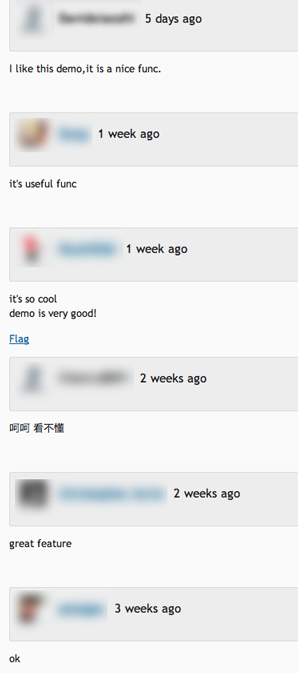 When we added comments to the API documentation last January, the idea was to provide a place for members of the community to augment the documentation with their own tips or real-world examples. While this system worked well when it was first introduced, it has become increasingly difficult to manage the enormous amount of spam that it has attracted. We also found that many people were trying to use it as a support system, which it was not designed to do. Because of this, we’re planning to turn off comments on the API site later this week in favor of more directed feedback options:
When we added comments to the API documentation last January, the idea was to provide a place for members of the community to augment the documentation with their own tips or real-world examples. While this system worked well when it was first introduced, it has become increasingly difficult to manage the enormous amount of spam that it has attracted. We also found that many people were trying to use it as a support system, which it was not designed to do. Because of this, we’re planning to turn off comments on the API site later this week in favor of more directed feedback options: